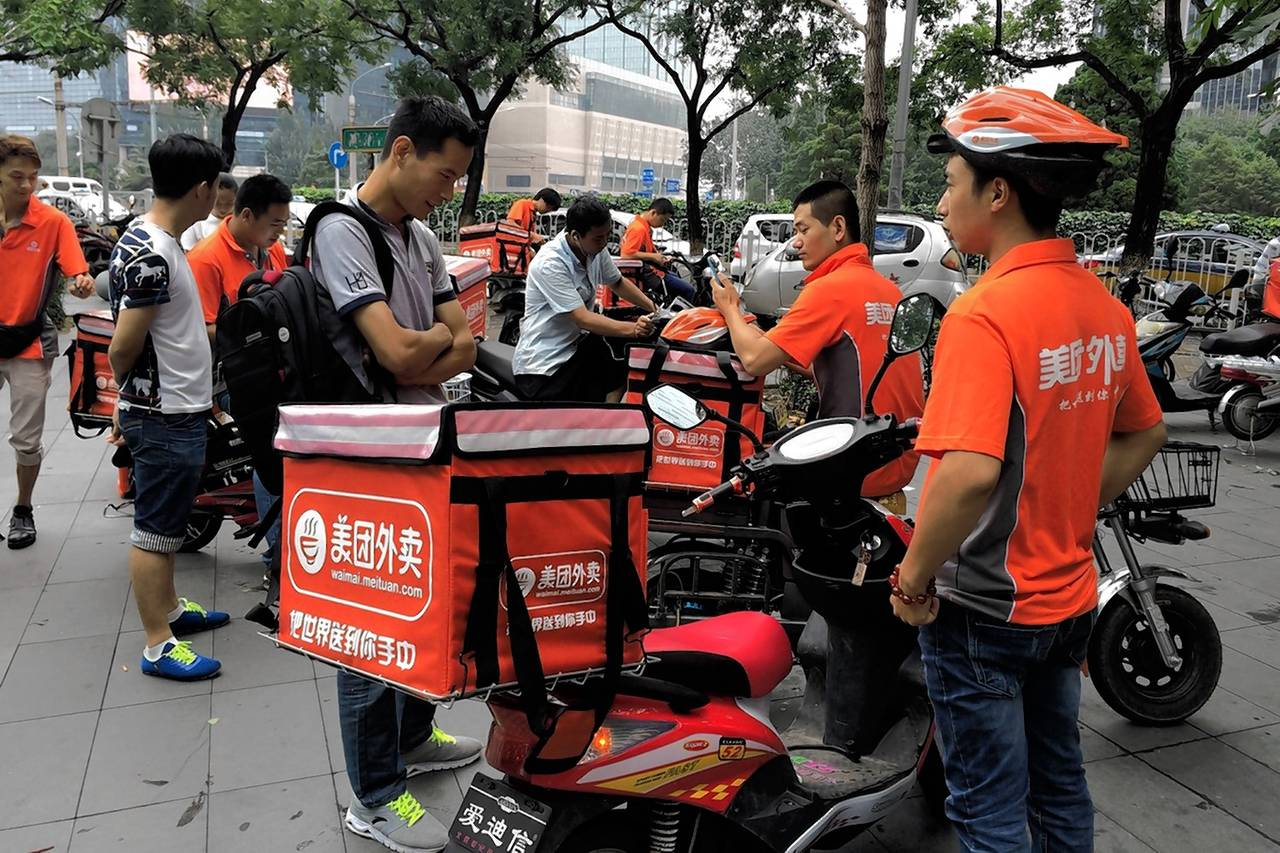China’s booming food delivery industry is showing signs of strain as the nation’s economic slowdown weighs heavily on the workers who drive its growth. Tensions are rising among delivery drivers, who are under immense pressure due to tight deadlines, shrinking wages, and a harsh work environment.
Recent viral videos show drivers reaching breaking points. In one clip, a rider smashes his phone after receiving a negative customer review. In another, a driver pleads with a police officer after running a red light, then pushes over his bike and runs away in frustration. In yet another, a group of drivers protests outside an apartment complex after one of their colleagues was allegedly mistreated by security guards. These incidents reflect the mounting stress faced by workers in China’s food delivery sector, which has become the largest in the world by both revenue and volume.
During the COVID-19 pandemic, the industry more than doubled in size, reaching $214 billion in 2023. However, the surge in demand that once provided steady income for drivers has now given way to an increasingly competitive and unstable environment. With China’s economy facing multiple challenges, such as a real estate crisis and declining consumer spending, delivery workers are feeling the squeeze.
In a sluggish economy, consumers are cutting back on spending, including takeout orders, which directly impacts the earnings of delivery drivers who rely on commission-based pay. Jenny Chan, an associate professor of sociology at Polytechnic University of Hong Kong, points out that drivers now work longer hours to maintain their earnings. Lower-priced orders mean lower commissions, and with fewer tips coming in, workers must push themselves harder to make ends meet.
China’s food delivery market is dominated by two giants—Meituan and Ele.me—which together control much of the industry. Their dominance gives them the power to set the terms of employment for drivers, often leaving workers with little room to negotiate better conditions. Labor rights advocates have raised concerns about deteriorating working conditions, noting that drivers are frequently penalized for minor infractions, even when they are not at fault.
With around 12 million drivers forming the backbone of China’s food delivery network, the industry remains essential, but the challenges it presents are mounting. Many drivers work in hazardous conditions, rushing to meet deadlines even in dangerous weather, and facing increased risks of accidents. The intense competition and lack of labor protections leave workers vulnerable, as many are treated as freelancers without job security or steady income.
Despite the industry’s growth, workers’ pay has declined. Last year, the average monthly income for delivery drivers was 6,803 yuan ($956), nearly 1,000 yuan less than five years ago. For many drivers, like 20-year-old Lu Sihang, this means working grueling 10-hour shifts just to earn enough to survive. With youth unemployment in China hitting record highs, more people are entering the delivery workforce, further intensifying competition for orders.
This competitive environment, combined with shrinking paychecks, has created a volatile situation. Delivery platforms have reduced bonuses and pay for workers, while restaurants, facing their own financial challenges, are offering cheaper delivery deals to attract customers. As profits soar for companies like Meituan and Ele.me, drivers are left bearing the brunt of cost-cutting measures.
Gary Ng, an economist at Natixis, explains that as China’s economy slows, consumer spending on delivery orders is decreasing, forcing restaurants to lower prices. This reduction in spending, coupled with the vast number of drivers vying for a limited number of orders, has significantly weakened workers’ bargaining power.
While some drivers, like 35-year-old Yang, appreciate the flexibility the job offers, many acknowledge that conditions are far from ideal. For many, the choice is simple: work longer hours or face financial hardship. In an industry that once offered a path to stable income, the future for China’s delivery drivers now seems increasingly uncertain.


















